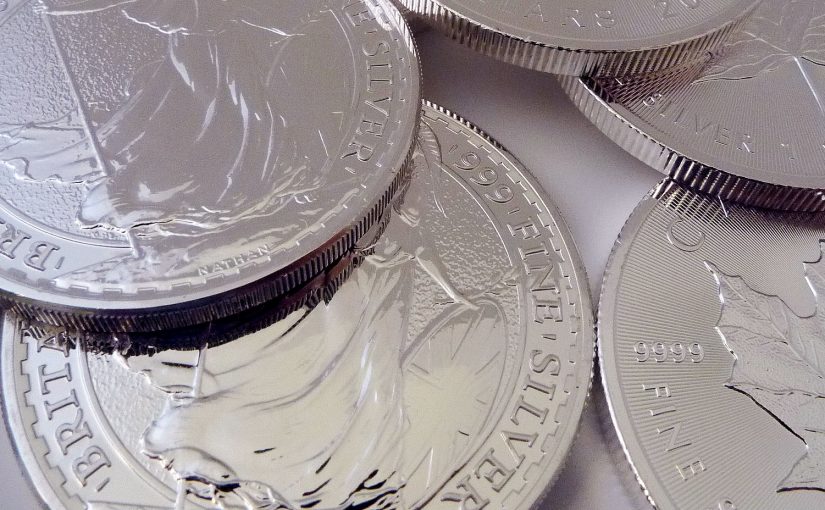Silver is widely regarded by the mainstream and financial media as a mere commodity and its true value is often unacknowledged. Silver has been dubbed “The indispensable metal” in virtue of its physical properties and conductivity.
Silver is used in jewelry, tableware, alloys, batteries, dentistry, glass coatings, LED chips, medicine, nuclear reactors, photography, photovoltaic energy, RFID chips, semiconductors, touch screens, water purification, wood preservatives and many other industrial uses. Only Oil has more industrial uses than Silver.
But the value of Silver does not stop there. Silver is an asset with intrinsic value, very high marginal utility and no counterparty risk, which means that it is also a monetary asset. Silver is money, and has been used as money in past civilizations more often than Gold.
And this begs the question, how should we value Silver if we consider it to be a currency? In this post I’ll explain four different complementary approaches to measure the price of Silver, which I personally use to allocate my assets properly.
1. Adjusted to classic inflation
The simplest way to valuate Silver is against the M1 Currency Supply, or in other words, adjusted for classic inflation, which is the increase of the currency supply, and not rising prices. Rising prices are the symptom of inflation, not the other way around.
A price chart adjusted to the M1 Currency Supply will display the price of Silver in such a way that each bar is adjusted for the amount of US Dollars in circulation, and thus, weighting the price of Silver against the available currency to bid for it.
To plot the Silver price adjusted to the M1 Currency Supply, just go to Trading View and plot the following formula on a Weekly or Monthly Chart: XAGUSD/M1. This is the chart that properly reflects the actual price of Silver.

2. Measured against Oil
The second approach is to calculate how many barrels of Oil we can buy with an ounze of Silver. This method provides valuable information because energy producers get paid for their exports in US Dollars, but don’t hold them for very long. Instead, they redeem those US Dollars for physical Gold in the Futures Market, which timely deliveries are guaranteed by the US Treasury. And we know that Gold is deeply correlated with Silver.
To plot the Silver price in barrels of Oil, go to Trading View and plot the following formula on a Weekly or Monthly Chart: XAGUSD/USOIL. You’ll find out a clean and predictable trading range going back thirty years.

Since big energy producers want to hoard Gold and not US Dollars, any sustained increase in the price of Gold will cause energy producers to raise prices for their exports, thus perpetuating this relationship.
We can safely assume these ratios to time our bullion purchases.
-
- XAGUSD/USOIL at 0.30 Silver is fairly priced relative to Oil
- XAGUSD/USOIL > 0.40 means Silver is overpriced relative to Oil
- XAGUSD/USOIL < 0.20 means Silver is cheap relative to Oil
At the time of writing, Silver relative to Oil is fairly priced.
3. Measured against Gold
Measuring Gold against Silver is something every trader does, regardless his knowledge about Gold or Silver as a monetary asset. We just have to divide the price of Gold by the Price of Silver to come up with the Gold to Silver Ratio, currently sitting at 85.40. Go to Trading View and pull up a symbol called “GoldSilver”.

Gold and Silver are mined out of the ground at a 1:10 ratio, however they don’t trade that way because Gold has a strict monetary demand while Silver has both industrial -fluctuating- and monetary demand. But also because the Paper to Silver Ratio is twice the Paper to Gold Ratio, meaning that more physical deliveries are made for Gold than for Silver, and this artificially depresses the price of Silver, as twice the amount of outstanding contracts are settled in cash.
Gold and Silver are both monetary metals, but central banks hold the former and not the latter. Since central banks don’t hold Silver, measuring Silver against the currency supply of any given central bank is unfeasible. However, since Gold and Silver’s monetary demand is often synchronized, we can use Gold’s valuation against the M1 Currency Supply and the National Debt as a proxy to gauge Silver’s potential.
At the time of writing, Silver is really cheap relative to Gold. I would place the mean Gold to Silver ratio at 60. This, however, could change dramatically if the world loses confidence in the US Dollar.
4. Measured against stocks
There is an invisible pendulum that swings relentlessly throught the ages from quality money to quantity currency, across multiple civilizations. The pendulum is there and yet it swings so slowly that entire generations forget about the nature of money and financial assets. Eventually currency becomes so worthless that holding financial assets no longer makes sense, as saving to manufacture or renew capital goods becomes impossible, and productivity slowly collapses.
Nothing captures this pendulum better than the Gold to Stocks Ratio, or the Silver to Stocks Ratio. All we need to do is measure the price of Gold, or for the purpose of this post, Silver, measured in shares of different stocks indices. For example, the DJIA 30, SP500 or Nasdaq 100.
Take for example the Silver to DJIA30 chart posted below. To examine this chart for yourself in Trading View, bring up a custom chart and calculate “XAGUSD/DJI”.

This particular chart is eye opening about where is the aforementioned pendulum located right now. Silver has never been this cheap relative to stocks, except for the period between 2001-2003.
Conclusion
The value of Silver can be calculated using many different and complementary approaches, assuming one considers Silver to be a currency. At the time of writing, everything points to Silver being severely undervalued.
Do you think Silver is cheap or expensive? Let me know below. Thank you.
![]()


That is very interesting, thanks Arthur.